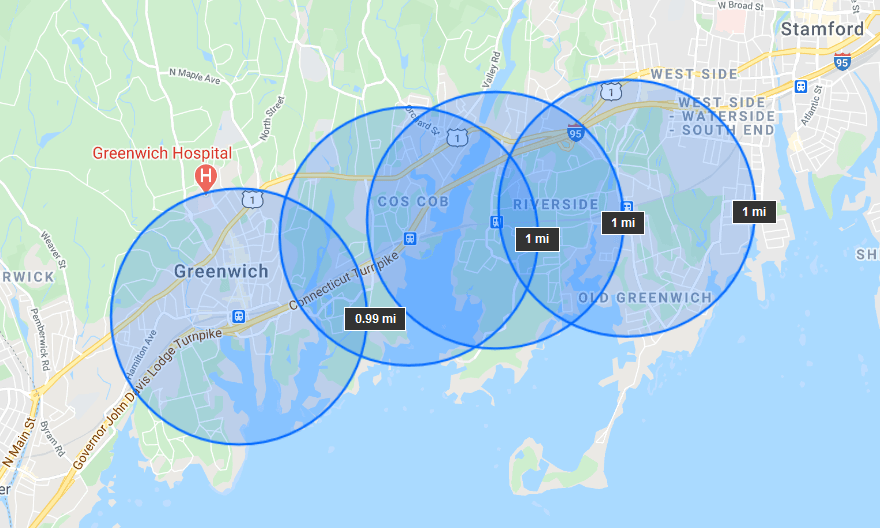

By Kimberly Fiorello
In the General Assembly, Monday’s 24 hour-long Planning and Development Committee Public Hearing showed that the debate surrounding state-mandated local zoning has become even more charged.
This was made clear when Mayor Justin Elicker of New Haven accused the town of Greenwich of presently using zoning laws to discriminate against people of color. This was how he justified the need to pass state-mandated local zoning laws. If you are for the legislation, you are applauded; if you are against it, you run the risk of being publicly maligned.
There were 341 speakers signed up to testify, but the meeting was slow-going due to the many questions being asked of the proponents of the bills. At the 24th hour mark, there were still about 100 folks waiting to have their voices heard, but they did not get the chance.
There was a lot of confusion about the bills. Are these zoning ideas new mandates or suggested guidelines? Could increasing septic capacity hurt ground water? Will having no parking requirements mean more on-street parking? Is it realistic to expect future residents to not own a car and assume they will use public transport or rideshares, like Uber and Lyft? Are the bills about more affordable housing or about more market-based housing?
Remarkably, the bills to upend local zoning controls are about market-based housing. The bills’ intent is to remove barriers and reduce costs to developers, so there will be a building surge in Connecticut. Guess who was on the list to testify? The Homebuilders and Remodelers Association of Connecticut and the United Brotherhood of Carpenters and Joiners of America, Local 326.
It’s simple supply-and-demand, says Sara Bronin, founder of DesegregateCT whose website touts that “SB1024 An Act Concerning Zoning Authority, Certain Design Guidelines, Qualification of Certain Land Use Officials, and Certain Sewage Disposal Systems” contains all of her proposals — as-of-right multi-unit buildings on main streets and by transit stations, form-based zoning for buildings and streetscapes, reduced parking requirements, removal of the word “character,” and more.
Consider these facts about Connecticut’s housing market.
Connecticut housing prices have been the slowest in the country to increase in value for the last thirty years. Since 1991, Constitution State homeowners have watched other states’ housing markets appreciate, while their’s performed worst in the country, according to the Federal Housing Finance Agency. In the bottom three, West Virginia and Illinois outpaced Connecticut.
Nationally, severe housing-burden for households, meaning housing costs eat up at least half of one’s monthly income, is greater on the West Coast and in the South than in New England, according to a Bloomberg CityLab report. However, for those who are suffering severe housing-burdens in Connecticut, the problem of having low incomes and high costs will not be helped by flooding the housing market with new multi-unit apartments near transit or commercial corridors. These can be some of the most expensive and already dense plots in any town.
Speaking of income, through 2019, Connecticut was on an eight-year losing streak of suffering net losses of residents. According a 2018 study by the Connecticut Commission on Fiscal Stability and Economic Growth, Connecticut’s higher-income-earning individuals who left were replaced by those earning less. And, during COVID despite unprecedented federal unemployment assistance pushing up personal income nationally, Connecticut ranked second-to-last for personal income growth, according to a Feb 2021 analysis by Pew Charitable Trusts.
Still, amazingly, in the last 18 years, the greatest amount of new affordable housing in our state was built in the towns of southwestern Connecticut. According to the state Department of Housing, 48% of all new DOH-defined 8-30g affordable housing was built in the region of Western Connecticut Council of Governments (which includes Greenwich and Stamford, up to Westport.) This was accomplished through the creative-thinking and innovations of the dedicated local citizens, who serve on town zoning commissions.
As for the proponents pointing to data on the DesegregateCT website proving Connecticut is the most segregated state in the country, there is also data at the WestCOG website that proves Connecticut is not the most segregated state in the country. On the national Dissimilarity Index, a commonly-used measure of residential segregation, Connecticut is above middle of the pack at #16 for having diversity.
During the hearing, irony was lost on some of the legislators who expressed how much they valued each citizen’s voice. Yet, the bills they were supporting would nearly eliminate public hearings for local zoning applications, thus silencing the public input they seemed so much to appreciate.
Worse, SB1024 says, “any aggrieved party alleging that the zoning regulations of a municipality are noncompliant…may file an application in the superior court…” (lines 357 to 364). This would allow any “aggrieved party” to bypass the local zoning appeals board and go directly to court. And elsewhere, SB1024 says, “If a municipality fails to adopt new regulations or amend existing regulations by June 1, 2022…any noncompliant existing regulation shall become null and void…” (lines 484 to 491).
The end result? A feeble, shrinking local voice.
What are the chances of Hartford legislators passing such a radical change to Connecticut’s timeless Home Rule tradition?
Very high given that the Democrat party enjoys a wide-margin of votes in both Houses and the Governorship in our one-party-rule state. Signs are showing that they know their “medicine” is not popular, but they know better. So, state-takeover-of-local-zoning bills are showing up in various forms in different committees, including Housing, Planning & Development, Transportation and even Public Health.
Now more than ever, individual freedom calls for vigilance. I hope you will make your local voice heard. Call Senate Dems at 860-240-8600, House Dems at 860-240-8500, and Governor Lamont at 860-566-4840.




